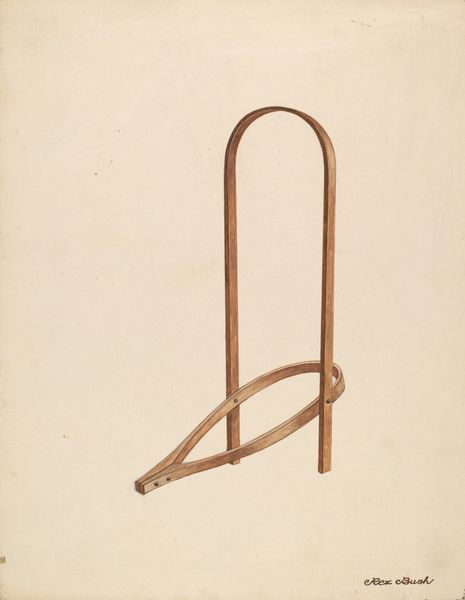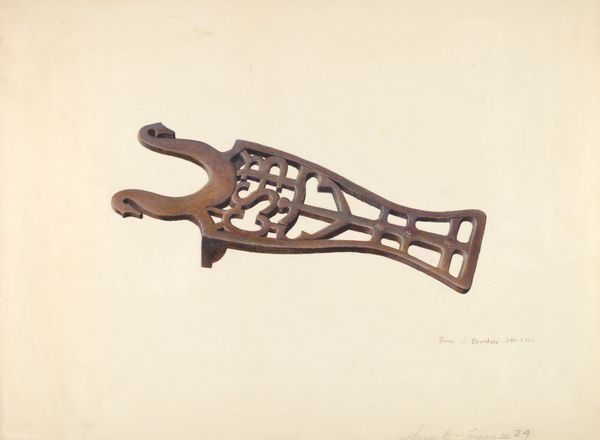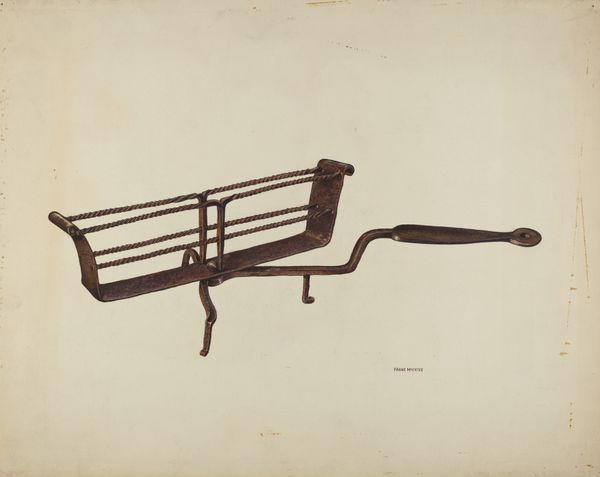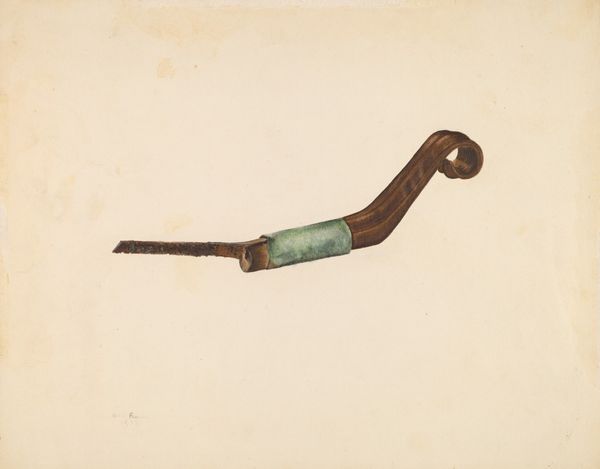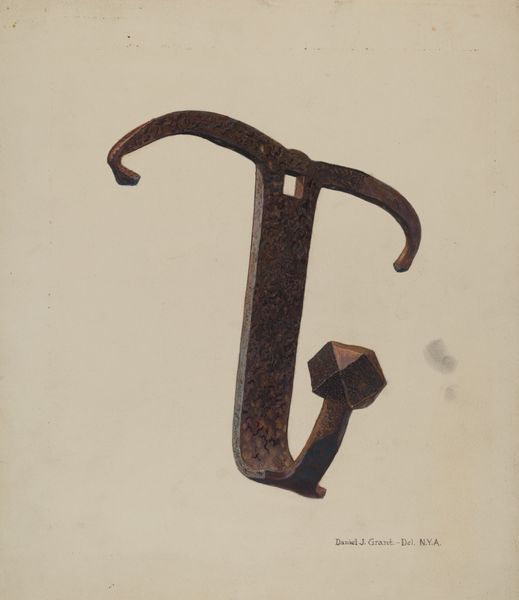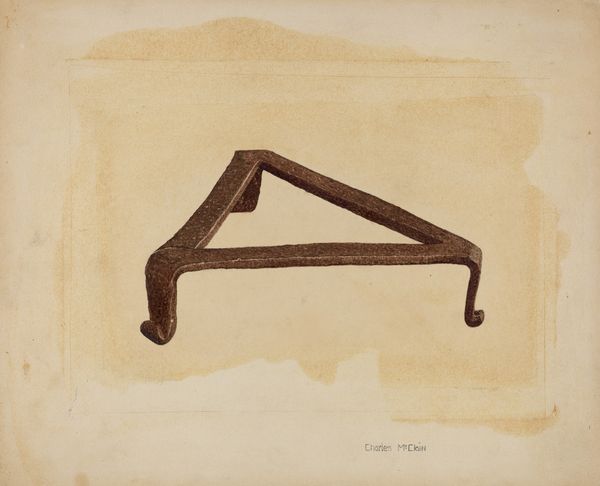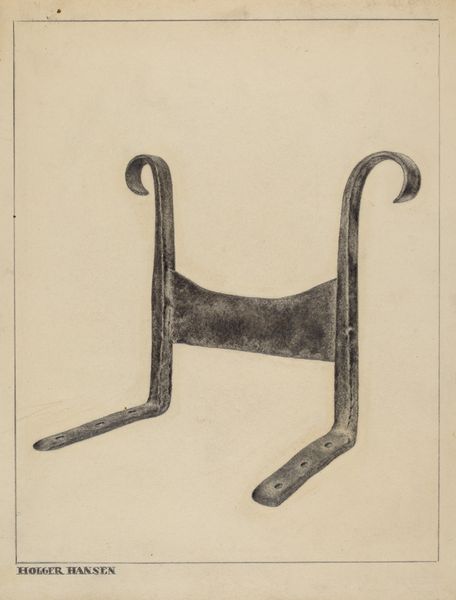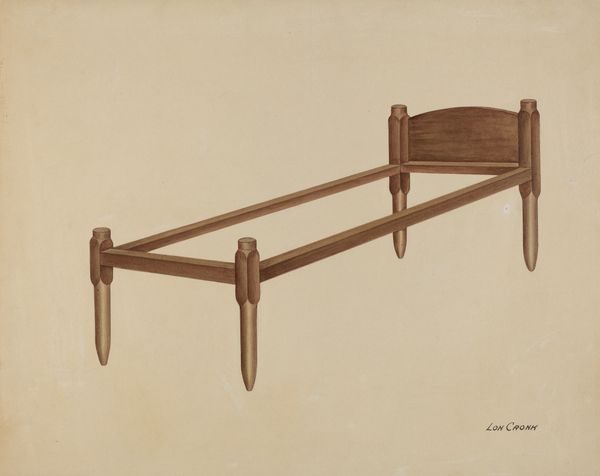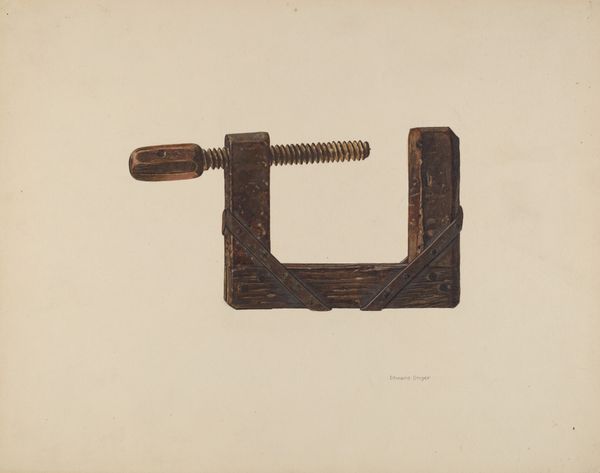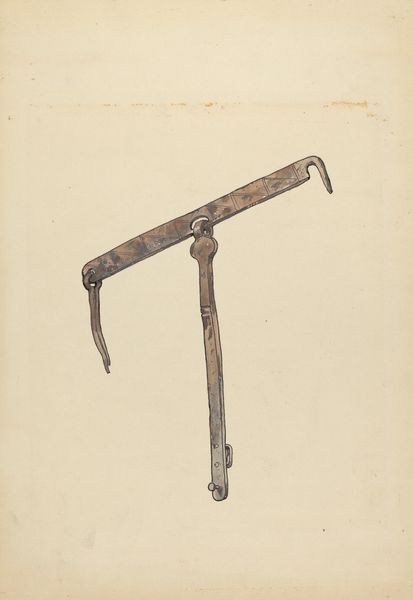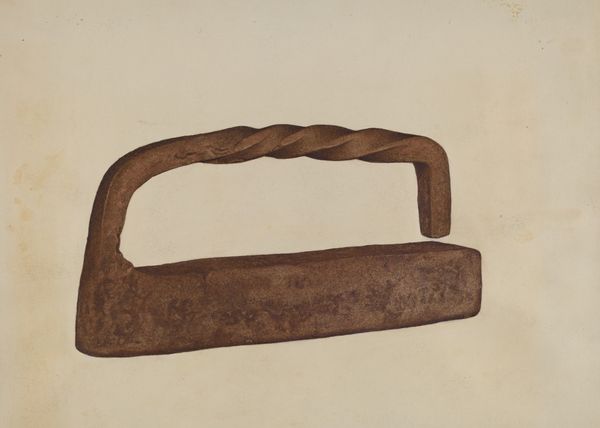
drawing, watercolor
#
drawing
#
watercolor
#
watercolour illustration
#
watercolor
#
realism
Dimensions: overall: 26.5 x 35.4 cm (10 7/16 x 13 15/16 in.) Original IAD Object: 1 1/4" high; 3 7/8" wide; 10 1/4" long
Copyright: National Gallery of Art: CC0 1.0
Curator: William O. Fletcher's watercolour and drawing entitled "Trivet" from around 1939 presents us with, well, a trivet! Editor: The humble trivet! And he's turned it into a heroic portrait, all alone and monumental on that stark white background. Sort of makes you consider how art elevates everyday objects. Curator: Absolutely, it encourages you to reflect. And Fletcher renders it with such incredible detail, you can almost feel the roughness of the forged iron, imagine its temperature near a hearth. We should contextualize its making as the beginning of the war looms large on the cultural horizon, and domestic objects begin to embody new and heavier weight. Editor: I'm struck by its austerity. It’s devoid of any decorative flourish, all utilitarian. Yet that spiraled handle suggests a vestigial aesthetic impulse. Perhaps Fletcher sees a latent beauty in function itself. Curator: Or even comments on the inherent beauty, but then considers his patron. He's interested in social constructs in imagery. The trivet in and of itself has associations with a simpler time. Was it a found item from a flea market or inherited from a great aunt? What is it in relationship to the client in question? Editor: That makes me consider this too. Its somber tones and stark composition might subtly echo the emotional tenor of the time. Everyday objects can function as poignant metonyms when you put a frame around them. The medium in watercolor also offers it a softness and approachability it otherwise would lack, perhaps adding another narrative or conceptual dimension? Curator: Exactly, as Fletcher's watercolour immortalizes this utilitarian item. And through him, we reexamine how artists choose, imbue meaning, and shape our view of the seemingly mundane and it asks "what is this painting really for?". Editor: Well put, Fletcher offers a stark study in still life through an industrial lens. It encourages contemplation about the meaning imbued on domesticity by socio-political currents, while its minimalism allows an array of interpretive doors to open up.
Comments
No comments
Be the first to comment and join the conversation on the ultimate creative platform.


